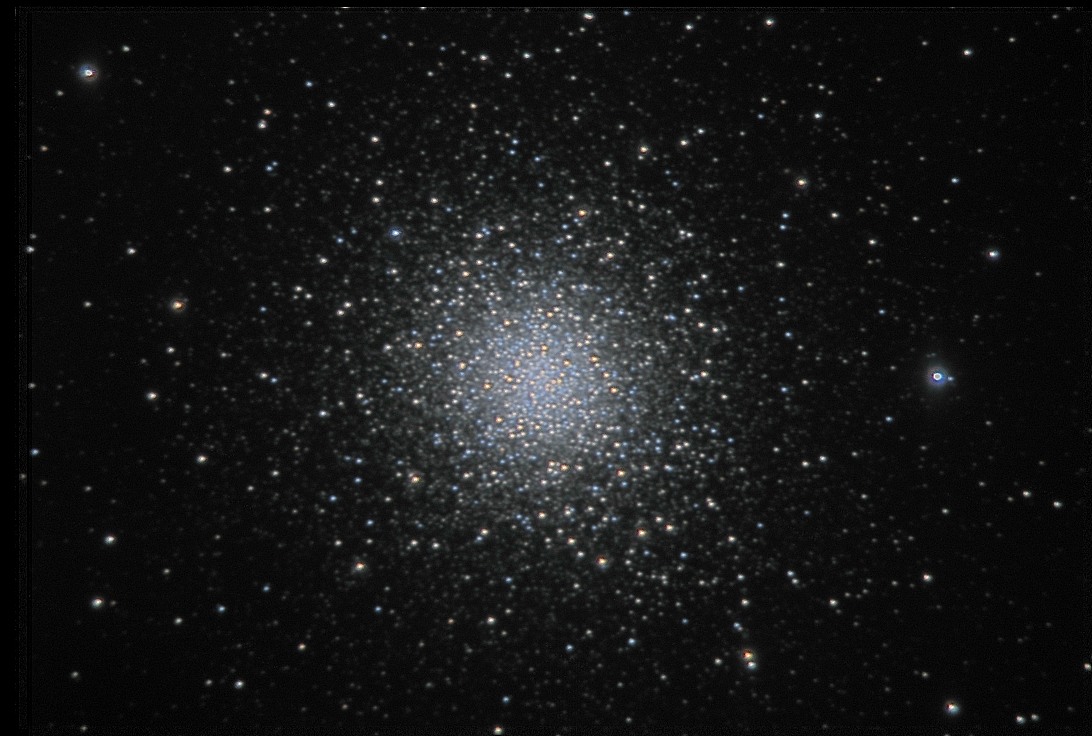M92

M92: M92 is a globular cluster in the constellation Hercules. It is a very bright object, and can be viewed with the naked eye under good conditions. (http://www.maa.clell.de/Messier/E/m092.html)
Messier: 92
NGC: 6341
Right Ascension: 17h 17.1m
Declination: 43° 08"
Apparent Magnitude: 6.4
Date: August 2008
Equipment: Meade 16" LX200 Schmidt Cassegrain
Exposure: L:R:G:B = 13:13:13:11 with one minute subframes
Scale: 1.01
Links to images of this object on other sites:
http://www.noao.edu/outreach/aop/observers/m92.html
Additional Comments: The name "globular" cluster, coined by William Hershel, is very descriptive of their appearance - a glob of stars. There are fewer than 200 globular clusters known around the Milky Way, and unless you are familiar with specific ones, they all look very similar. These clusters condensed while the Milky Way was still forming, and reside in a spherical halo around the disk. Unlike objects in the disk, which have a mostly orderly rotation about the galactic center, the orbits of globular clusters are random. It was the three dimensional distribution of globular clusters that Harlow Shapely used to find the center of the Milky Way. All large galaxies are observed to have globular clusters in a halo. Globular clusters are ancient. Generally comprising what are called Population II stars (old ones with fewer heavy elements), there are no longer any luminous, blue, main sequence stars, and the remaining distribution of stars is noticeably redder than that found in open clusters in the spiral arms. Lots more information can be found here: http://en.wikipedia.org/wiki/Globular_cluster
Views: 3925
 This work is licensed under a Creative Commons Attribution-NonCommercial-ShareAlike 4.0 International License.
This work is licensed under a Creative Commons Attribution-NonCommercial-ShareAlike 4.0 International License.

